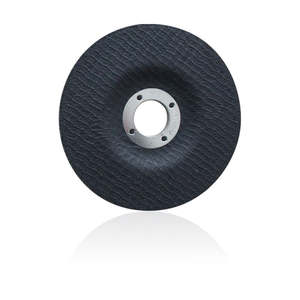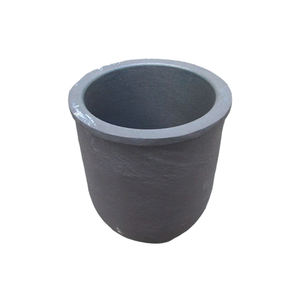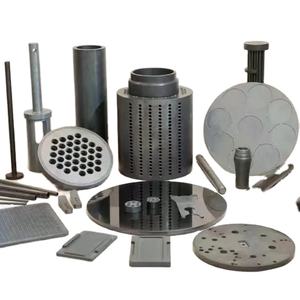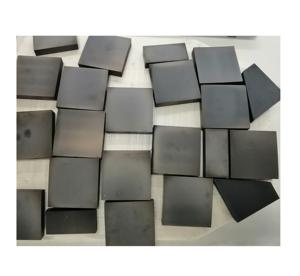Professional industry ceramic supplier, silicon nitride, silicon carbide, aluminum nitride and any other kinds of ceramics.
PRODUCT PARAMETERS
Description
Overview of High-Temp Resistant Components Silicon Carbide Ceramic Components
High-Temp Resistant Components Silicon Carbide Ceramic Components ceramics are a class of ultra-high-performance materials known for their exceptional thermal conductivity, outstanding mechanical properties, and superior chemical stability. They excel in the most demanding environments involving extreme temperatures, wear, and corrosive agents. This combination of properties makes SiC ceramics indispensable for advanced applications in aerospace, energy, automotive, and industrial processing.
Features of High-Temp Resistant Components Silicon Carbide Ceramic Components
-
Exceptional Thermal Conductivity: Facilitates excellent heat dissipation, outperforming many metals and most other ceramics.
-
High-Temperature Strength: Maintains remarkable mechanical strength and creep resistance at temperatures up to 1650°C.
-
Superior Wear & Abrasion Resistance: Offers extreme hardness, making it ideal for wear-prone components like seals, nozzles, and liners.
-
Excellent Chemical Inertness: Highly resistant to oxidation and attack by acids, alkalis, and molten metals.
-
High Thermal Shock Resistance: Withstands rapid temperature changes without cracking or degrading.
-
Semiconductor Properties: Used extensively in high-power, high-frequency electronic devices.
Specification of High-Temp Resistant Components Silicon Carbide Ceramic Components
Silicon carbide ceramic components are very strong. They handle extreme heat well. They work reliably in conditions above 1600°C. This makes them great for tough jobs. Many industries use them. They resist sudden temperature changes too. This is called thermal shock resistance. Parts don’t crack easily when heating or cooling happens fast. This is a big advantage. They are very hard and stiff. They don’t wear down quickly. These parts last a long time. This saves money over time. They also fight corrosion effectively. Harsh chemicals don’t damage them much. Acids and bases have little effect. This is important in chemical plants. They transfer heat efficiently. This helps control temperatures in systems. Electrical systems use them sometimes. They can act as insulators or conductors. It depends on the specific grade used. You find them in many demanding applications. Furnace parts often use silicon carbide. Kiln furniture relies on it. Heat exchanger components benefit from it. Burner nozzles perform better with it. Wear parts in machinery last longer. Chemical processing equipment uses it for durability. They offer a reliable solution for high temperatures and harsh conditions.
Applications of High-Temp Resistant Components Silicon Carbide Ceramic Components
Silicon carbide ceramic components handle extreme heat. They resist very high temperatures. This makes them perfect for tough industrial jobs. Many industries use them for this reason. Silicon carbide is very hard. It lasts a long time even in hot places. It also handles chemicals well. This strength is important for demanding applications. The material works well under stress. It keeps its shape and strength when hot.
These parts are common in metal processing. Furnaces need parts that can take intense heat. Silicon carbide parts work well inside furnaces. They help move hot metal. Kilns for ceramics and glass use them too. These parts survive the high temperatures inside. The energy sector relies on these components. Power plants use them in hot sections. They are found in parts of gas turbines. They help burn fuel cleanly and efficiently. Waste incinerators use them. The material handles the corrosive gases. It doesn’t break down quickly.
The aerospace industry values silicon carbide. Jet engines create extreme heat. Silicon carbide parts perform well in these engines. They help manage the high temperatures. Automotive uses are growing. Brakes get very hot. Silicon carbide parts help handle this heat. Some new car technologies use them. They are found in systems dealing with exhaust heat. Chemical plants need durable materials. Reactors and pipes face heat and chemicals. Silicon carbide parts work reliably in these conditions. They resist corrosion. They maintain their integrity.
Semiconductor manufacturing uses these ceramics. The process needs clean, high-temperature environments. Silicon carbide parts meet these needs. They are used in wafer handling. They are used in high-heat process chambers. Mining operations use them. Equipment wears out fast in abrasive conditions. Silicon carbide parts last longer. They reduce downtime. They lower replacement costs. This material offers real solutions. It improves performance in hot, harsh settings.
Company Profile
Tanki New Materials Co.Ltd. focus on the research and development, production and sales of ceramic products, serving the electronics, ceramics, chemical and other industries. Since its establishment in 2015, the company has been committed to providing customers with the best products and services, and has become a leader in the industry through continuous technological innovation and strict quality management.
Our products includes but not limited to Aerogel, Aluminum Nitride, Aluminum Oxide, Boron Carbide, Boron Nitride, Ceramic Crucible, Ceramic Fiber, Quartz Product, Refractory Material, Silicon Carbide, Silicon Nitride, ect. please feel free to contact us.

Payment Methods
T/T, Western Union, Paypal, Credit Card etc.
Shipment Methods
By air, by sea, by express, as customers request.
5 FAQs of High-Temp Resistant Components Silicon Carbide Ceramic Components
What temperatures can silicon carbide parts handle?
Silicon carbide ceramic components withstand extreme heat. They operate reliably above 1600°C (2912°F). Some grades even reach 1800°C (3272°F) in inert atmospheres. This makes them perfect for very hot environments.
Where are these high-temp parts used?
You find them in demanding industrial settings. Furnace linings, kiln furniture, and heat exchanger tubes are common uses. They are vital in metal processing, semiconductor manufacturing, and chemical plants. Any place needing strong heat resistance benefits.
What benefits do they offer besides heat resistance?
These parts last a long time. They resist chemical corrosion very well. Their thermal conductivity is high. This means they transfer heat efficiently. They also maintain strength at high temperatures. This combination improves equipment lifespan and process efficiency.
How do they compare to other heat-resistant materials?
Silicon carbide outperforms many metals and standard ceramics. It handles higher temperatures than most metals. It is much tougher than regular oxide ceramics like alumina. Its thermal shock resistance is excellent. This means it survives rapid temperature changes better.
Are there any handling concerns?
Yes, brittleness is a factor. Silicon carbide is hard but can crack under strong impact. Handle these components carefully during installation. Avoid dropping them or applying sudden force. Proper design minimizes stress points. This prevents breakage in service.
REQUEST A QUOTE
RELATED PRODUCTS

High Temperature Resistance Silicon Carbide Casing Drone Ceramic for Pump Silicon Carbide

Premium Silicon Carbide Round Ceramic Cylinder for Armor Applications

Ceramic Plunger Pressure Free Sintered Silicon Carbide Ceramic Rod Refractory Ceramic Tube

Customized Silicon Carbide Ceramic Bearing Part

High Hardness Wear Resistance Technical Silicon Carbide Sic Ceramic Valve Seat



